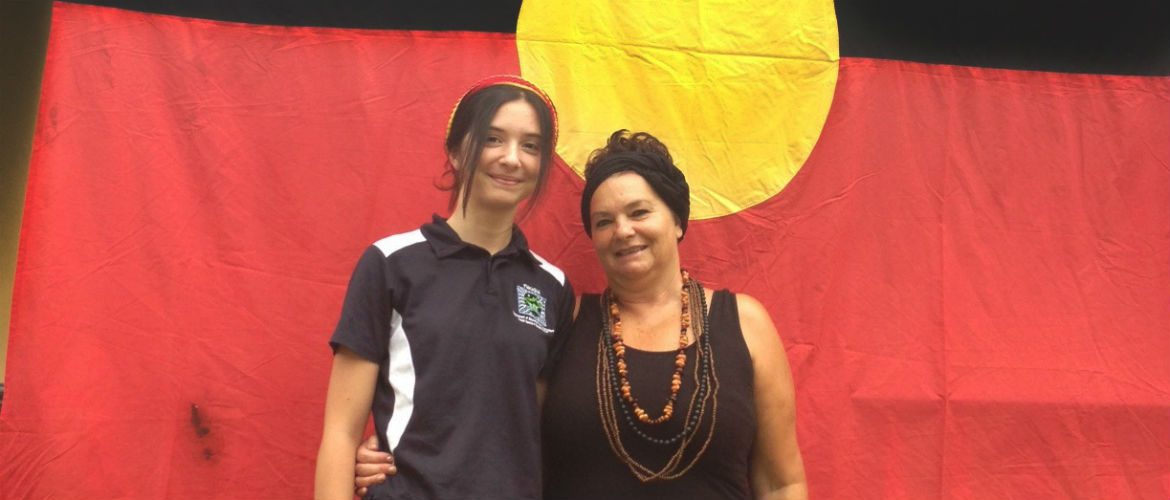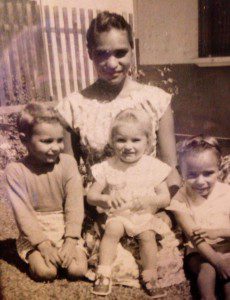
Aboriginal and Torres Strait Islander peoples should be aware that the following page contains images or names of people who have since passed away.
Health professional, Close the Gap Steering Committee Member, Cultural Lead at the Heart Foundation and proud Noongar woman, Vicki Wade reflects on her people’s struggle to overcome generations of disadvantage and the subsequent health burden.
Aboriginal and Torres Strait Islander Peoples experience higher rates of infant mortality, horrifying levels of chronic disease and appalling life expectancy when compared to other Australians.
“But I’ve stopped spouting the statistics at conferences,” says Vicki.
“I reckon we’ve all become a bit numb to them. I found they were just rolling off my tongue like a mantra. What are important are the people behind these statistics: their stories. We need to hear these stories to counter the myths and misconceptions about why Aboriginal people are sick. The myths get in the way, and they’re hampering our efforts to put things right.
“My experience is that our Indigenous health crisis is the result of years of struggle against a misunderstanding of our people.
Vicki wanted to put things right from an early age; and she credits her mum as a big influence.

“Growing up as an Aboriginal girl was tough in the 60’s and 70’s. There was a lot of racism and there was nothing in our school curriculum to explain who we were. One boy remarked of my brothers and me that we ‘must be Chinese or something’. This confused me as a child as mum always said this was our country.”
“I remember my mum’s response at a subsequent family meeting: ‘the price you put on your head is the value others will put on you too’. Basically, she was saying I have to believe in myself. And while this has been hard — knowing how much our people have lost — my mum’s words have stuck with me throughout my life; they have shaped me and kept me strong and resilient.
“My Noongar mob’s traditional land stretches across the south and west of Western Australia. My grandmother was placed in state care on Gnowangerup Mission when her mother died. She later married and gave birth to my mum on the mission.
“Nan talked fondly of life before the mission, living off the land in her ‘Mia Mia’ [a small trig-framed hut]. She loved nothing more than when her sons brought the ‘Yonga’ [kangaroo] back to camp. The tail was always hers. Being forced from our land could have had a disastrous impact on my family. But today, far from country, my brothers and I continue to fight hard to preserve our culture and fight for the rights of our people. We survive because we were formed from a strong matriarchal line: women of healing and nurturing.
And with four generations of health providers in her family, Vicki knows that health equality is possible: if we all work together.
“My Nan looked after the women at the mission. With no formal training she was midwife, obstetrician and paediatrician. My mum was an enrolled nurse: one of the first in WA. This lineage continued when I went into nursing, and my daughter takes us into the future as a doctor.
“As Aboriginal and Noongar women we have a great responsibility and a great opportunity to share our culture and our wisdom with other Aboriginal women and with the young goolingars coming through; but we need Aboriginal and non-Aboriginal people working side-by-side. We need to walk together to bring about change.
“The Close the Gap campaign has made significant inroads, but to stay on track, we need to further build the support for Indigenous health equality. Please spread our stories and join me by signing the Close the Gap pledge (and encouraging others to sign too).”
Sign the Close the Gap pledge and you’ll help increase the pressure on the government to ensure Aboriginal and Torres Strait Islander health programs are adequately prioritised and funded.
Help us achieve 250,000 signatories by March 2016. Sign the Close the Gap pledge today.